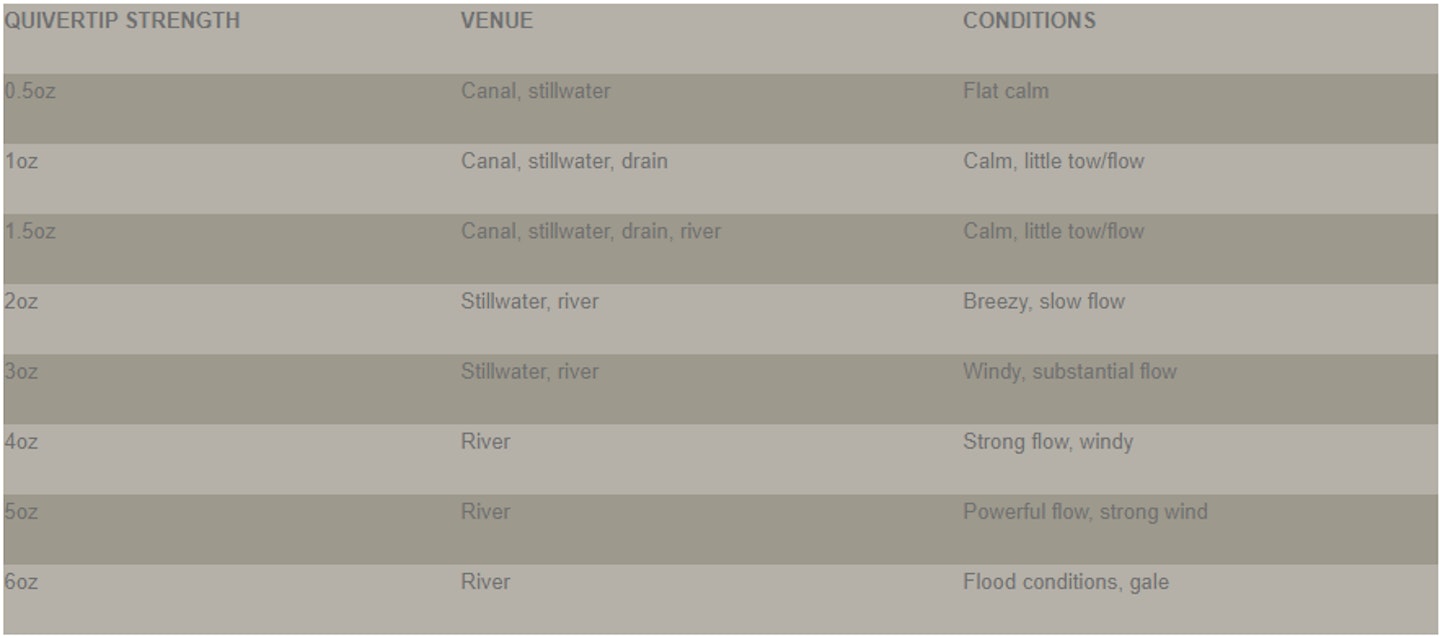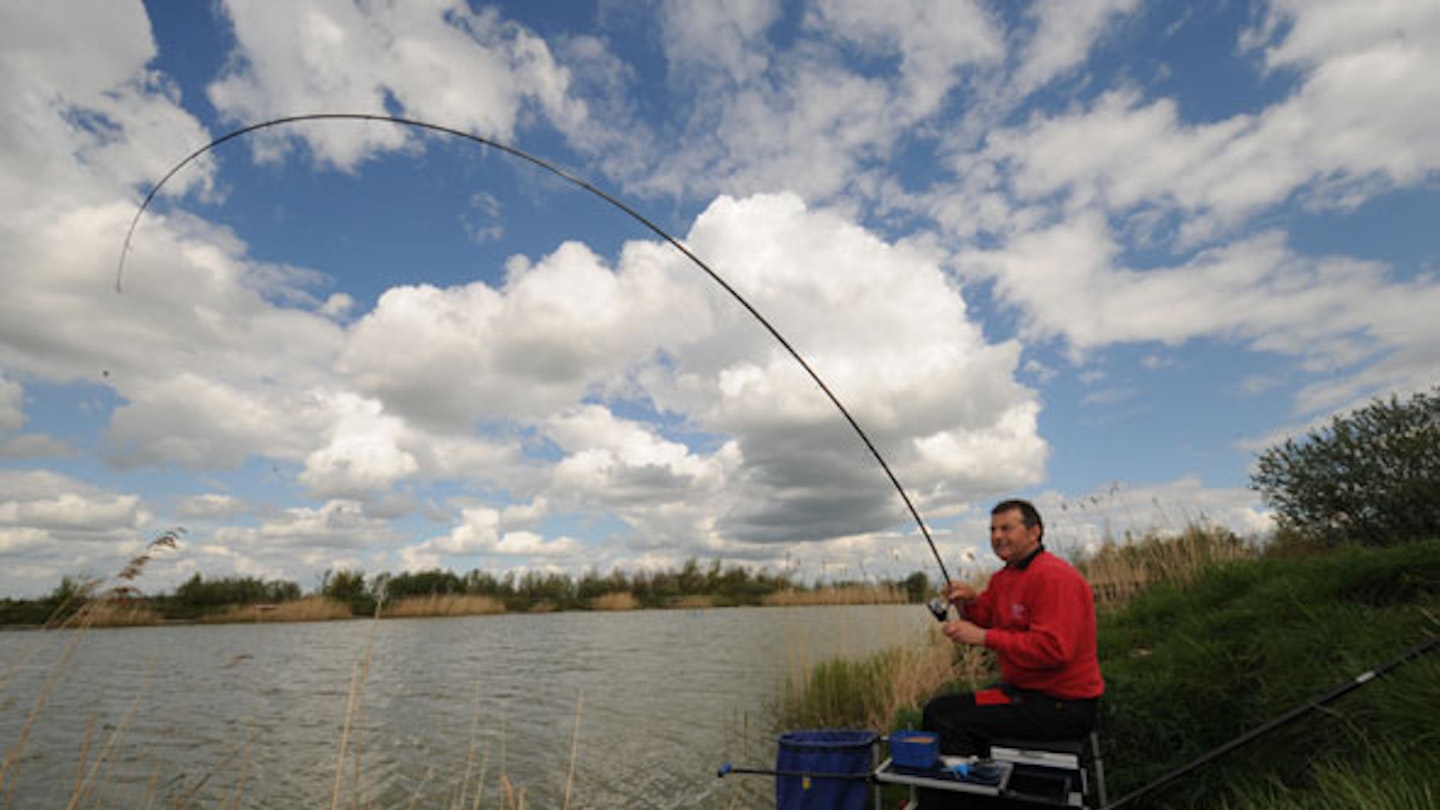If you’re looking to buy a brand new coarsefishing rod, but need a little help to pick the right one, or you’re unsure about all the many styles of rod and their features, read on as here’s a comprehensive guide to purchasing fishing rods.
It’s no wonder anglers can’t decide which fishing rod to choose as there’s so many different types out there available from a multitude of suppliers and manufacturers. It can be an absolute nightmare making sure you’re buying the right one for the job.
Here we go into great detail about the styles of rods available, the types of line guides, length of rod, power, test curve, handle styles and joint fittings.
By the end of this article you’ll be up to speed with all types of rods, how they perform, what to look out for and be safe in the confidence that you’re handing your cash over knowing that you’ve bought the correct rod for the venue, species and distance you intend fishing.
WHAT RODS ARE ON THE MARKET?
The table below covers all the many different types of fishing rod on the market, plus information on the best venues to use the rods, and the species they are designed to catch. When the table states ‘silverfish’ this means roach, rudd, perch, skimmer bream, ruffe, gudgeon, small chub, ide and bleak – basically all those small species that frequent most of our venues countrywide.
Also, when referring to the strength of rods Heavy equates to Power. And the term Quiver also covers Feeder rods.

LINE GUIDES AND ROD RINGS
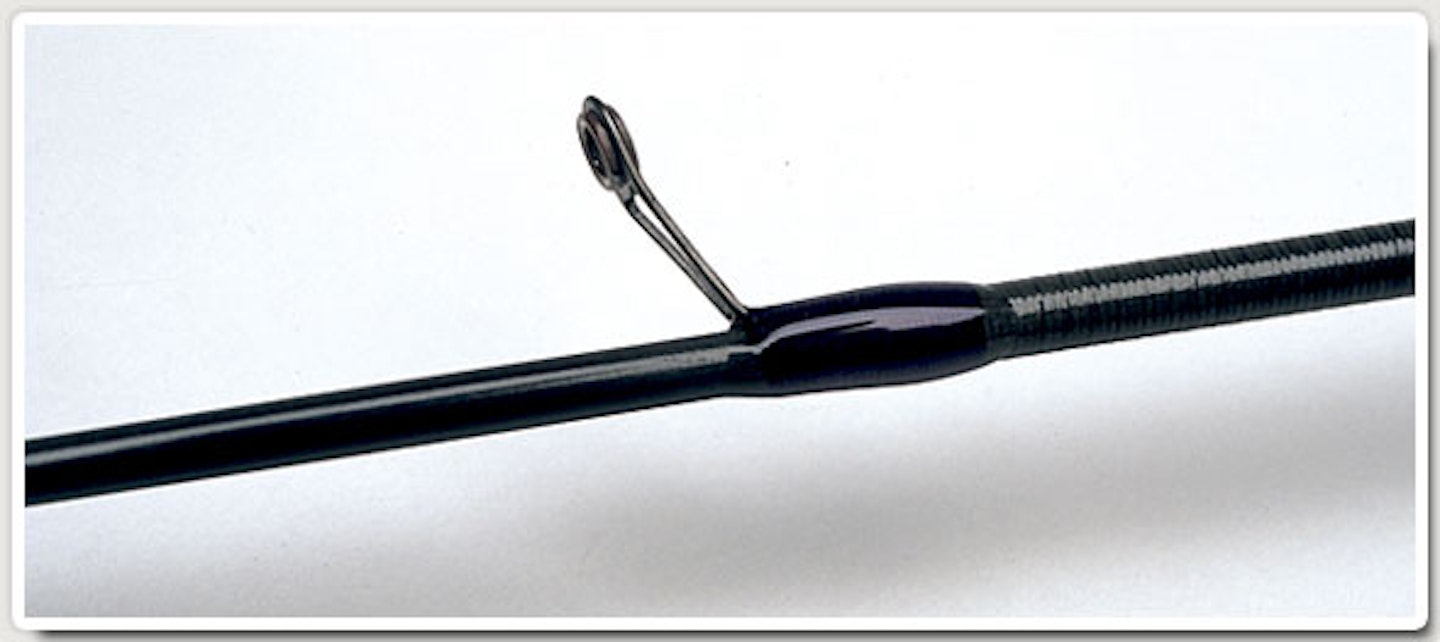
These are just as important as the blank of the rod because correct rod ring placement will ensure that the rod bends perfectly. Certain type of guides will produce ultra lightweight rods, while certain line guides will make for a seriously strong rod. Finally, the size and the materials used within the guides (coupled with the rod’s strength) will determine the distance the angler will be able to cast.
The butt ring (the one closest to the handle) has to be the strongest ring as this has to take the most tension because the line travels through this guide and then leaves it at an angle to reach the spool of the reel. You’ll find that most rod butt rings are triple-legged – they have three stems that are whipped to the rod blank.
The tip ring on most rods is also reinforced to take the brunt of any knocks more than anything. Fishing line tends to run straight through the tip ring on quivertip and waggler rods so strength where playing fish or casting isn’t really an issue – the strength is simply there to protect that guide.
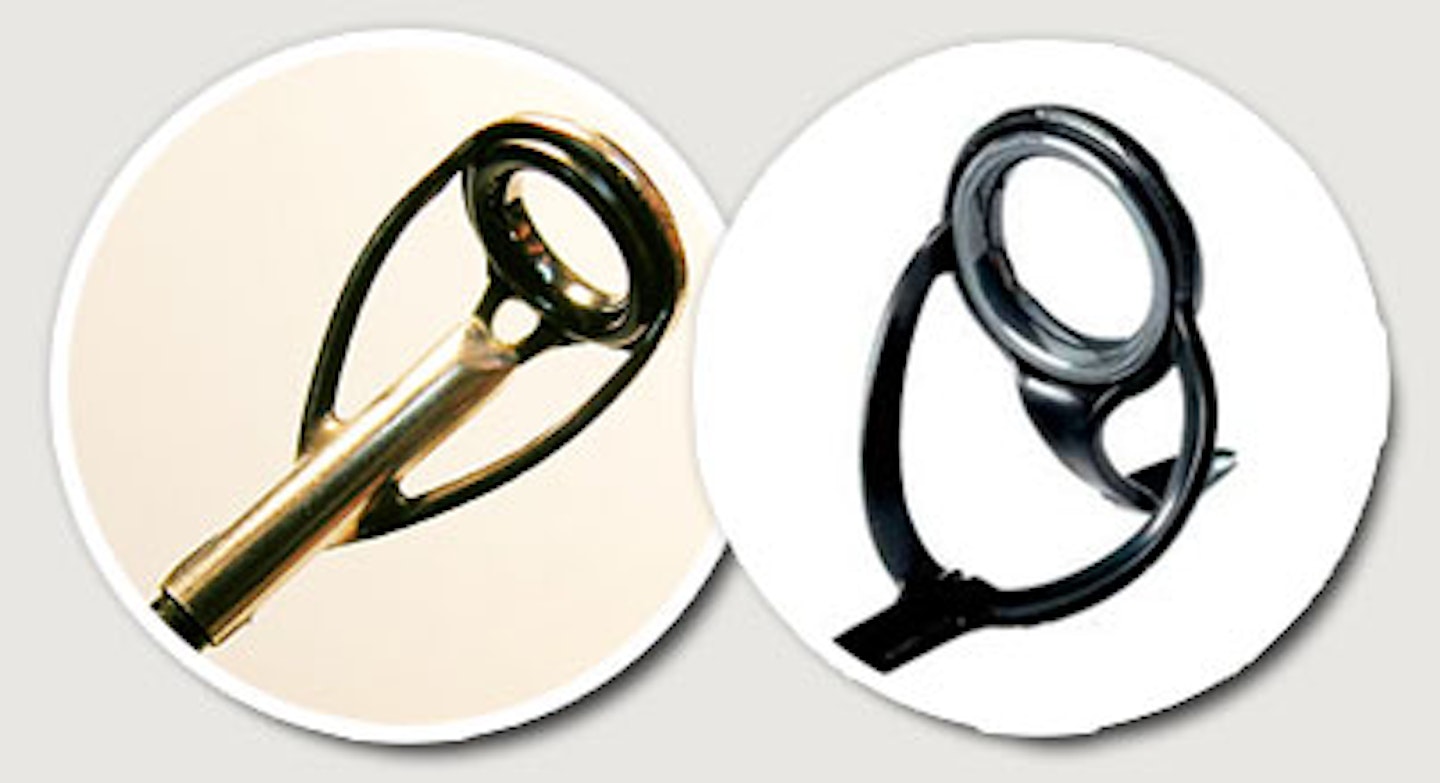
All other line guides along the blank will vary in style depending upon the strength and weight of the blank. There’s no point in creating a very lightweight, through action rod designed for lightweight fishing and ring it with super strong guides having triple legs joining then to the blank. That would defeat the rod’s action and performance.
In general terms, the stronger the rod blank, the stronger the line guides need to be to be able to cope with the power of the fish being caught.
You’ll notice that rods have different numbers of line guides, spaced differently. Take a typical carp rod against a typical waggler rod. The carp rod may have six guides, while the waggler rod will have 12 or more. The number of guides reflects the strength of the rod. The more flexible the rod, the more line guides will be needed to ensure that the mainline doesn’t touch the rod blank, and it follows the same curve as the rod when it is bent.
You will also notice that some line guides are longer than others. Waggler rods and carp/specialist rods tend to have long line guides while quivertip rods tend to have quite short line guides.
Longer guides help keep the line well away from the rod blank when casting and this prevents the line slapping against the rod blank which could potentially slow it down due to the resistance caused by the mainline contacting the blank.
WHAT IS THE DIFFERENCE BETWEEN THE DIFFERENT LINE GUIDE CENTRES?
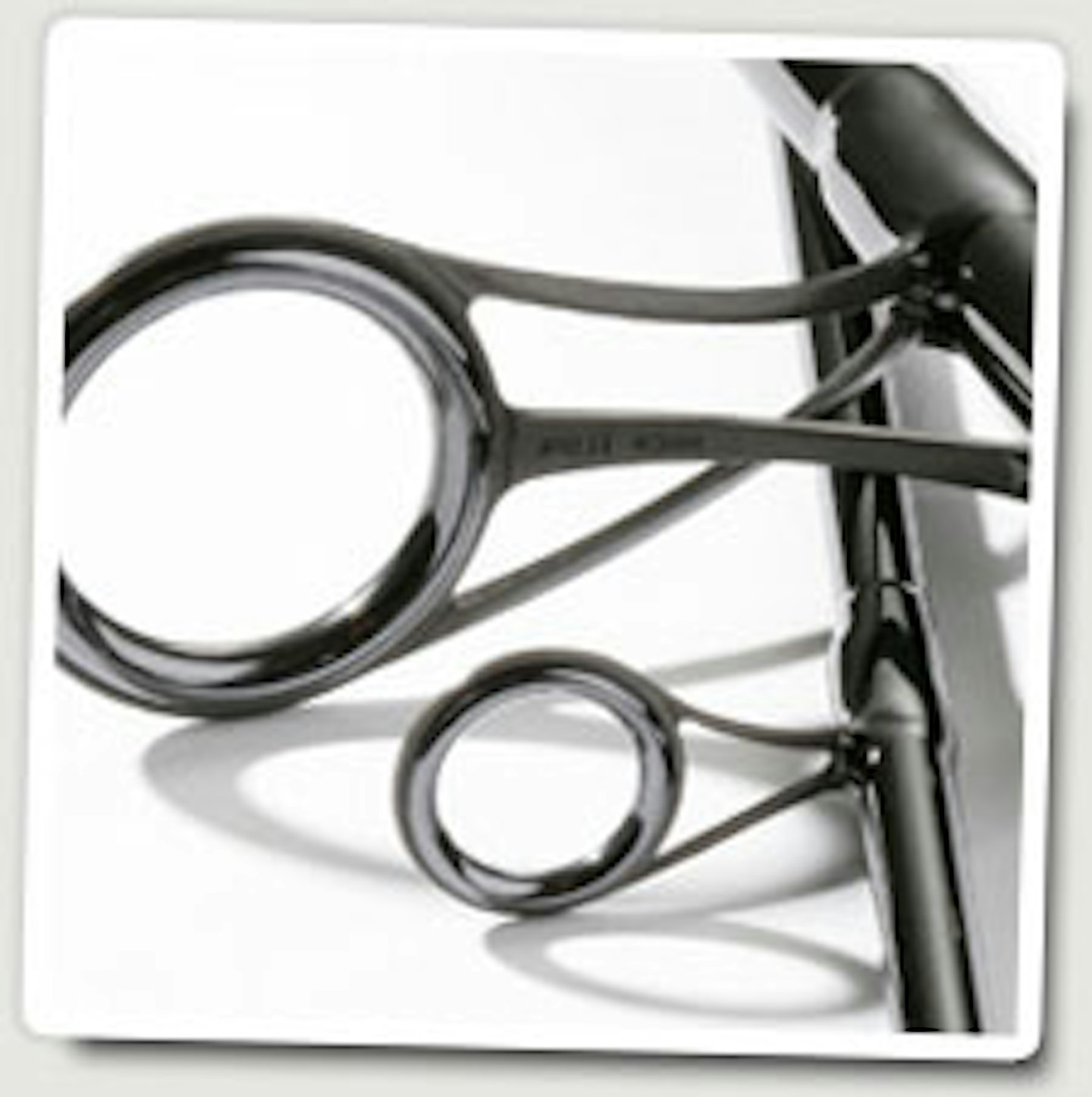
Fuji ALCONITE Guides have a bright black polished centre, made from reinforced Aluminum Oxide with a hardness of 1300 to 1500 vickers. This centre is used in low rider rolled edge frames.
Fuji ALCONITE Guides have a bright black polished centre, made from reinforced Aluminum Oxide with a hardness of 1300 to 1500. This centre is used in low rider rolled edge frames.
Fuji HARD Guides and Tips. The Hard Centre is Dark Brown in Colour, made from Aluminum Oxide and has a hardness of 1200 to 1400 Vickers.
Fuji Hard Ring high grade Aluminum Oxide Centre, is a Blue Grey colour and has hardness of 1300 to 1400 Vickers. All Guides are mounted in Stainless Steel Frames with black finish.
Fuji Sic Guides and tip rings. The Sic centre is a Graphite, is black in colour and has a hardness of 2200 to 2400 vickers.
Fuji Titanium rod guides with Sic centre are the lightest guides available on the market. You will find these guides on the higher end, top quality waggler rods.
WHY DOESN’T MY ROD JOINT FIT CORRECTLY?
There are two different types of joint between rod section. The basic joint is a simple put-over joint where the next section along the rod simply slides over the last. They are easy to produce, they fit well and are the cheaper option when rod-building.
The more advanced joint is the spigot. This is an additional length of thinner diameter carbon tubing protruding from the rod joint. The next section slides over the spigot to form a snug and tight fit.
Spigot joints help keep the rod’s weight down as the blanks can be thinner throughout the length.

But many newcomers to fishing are put off by spigot joints. Why? Because they put the rod together and see that there’s a gap between the two sections. That’s how they should be because every time you slide the rod together a microscopic amount of carbon is ground off the spigot joint, so there has to be some ‘give’ in the join to accommodate the reduction in carbon on the spigot. Eventually, after many years of use, the rod sections will touch as the spigot wears down, and that’s when the join between the section becomes weak and the rod may twist, slip and even fall apart on the cast.
CORK, DUPLON AND ABBREVIATED HANDLES

There are three main types of rod handle. There’s the traditional cork that gives the rod a great look and provides excellent grip plus warmth. Then there’s Duplon, which is black or dark grey foam – a cheaper and easy-to-produce alternative to cork. Finally there’s abbreviated handles. These are common on carp rods.
Some rods have a mix of cork and Duplon. This won’t affect the rod’s performance at all, but it will help keep the rod’s cost down though as the Duplon section is cheaper to place upon the rod butt compared to cork.
If the truth be told, abbreviated handles are nothing more than a fashionable addition to carp rods. They make the rod look nice, and they do provide grip in the right places, but that’s all really.
ROD ACTIONS AND TEST CURVES
In the main there are three different types of rod action: Tip action (sometimes called Fast Action, or FA), tip-to-middle action and through action.
You can clearly see the different action styles in the diagram, showing how each rod bends when placed under pressure.
Fast action rods are the best for picking line up quickly on the strike because the middle and the butt sections remain fairly straight while the tip section will bend quickly to absorb the shock of setting the hook into a fish. They are also the best for casting as the main section of rod offers tremendous power, while the ‘whippy’ tip will help flick the rig out.
Most rods on the market have tip-to-middle actions, meaning that the rod will bend easily from the tip to the middle section of the rod to absorb any lunges of hooked fish, then when this area of the rod reaches full compression the middle to butt section will begin to release its power and start to bend.
Through action rods bend from the tip right through to the butt. There aren’t that many through action rods available nowadays. Avon rods tend to have through actions though, in keeping with their traditional roots. These actions don’t lend themselves to long distance casts, but then again most Avon rods are intended for use on rivers anyway, where short casts are the norm.
You may well have heard the phrase ‘progressive action’. This means that the power comes into the rod progressively as the rod bends from the tip. A true progressive blank will increase the power equally as the tip is pulled round. Some even bend in the handle, when placed under extreme pressure.

The top-most rod has a tip action (or fast action) which means that the middle and butt sections remain absolutely rigid while the tip bends through the 90 degree curve.
The rod in the middle has a tip-to-middle action – the butt section remains rigid while the other two sections bend through 90 degrees as the weight pulls down on the rod.
The bottom-most rod has a through action – like most Avon rods. It bends right through the blank as the weight pulls down on the tip.
REEL SEATS AND DESIGNS
Years ago we were stuck with one design of reel seat – simple brass or in later years graphite rings that were pushed over the foot of the reel. These, quite frankly, were awful things that made the reel slip, slide and sometimes fall off completely.
Thankfully we now have far more advanced screw-fit reel seats that grip the reel perfectly, no matter what type of reel we use.
Some screw-lock reel seats on cheaper rods have a visible screw design. When the reel is set upon the rod, your hand will come into contact with the screw and that can be quite uncomfortable.
On more expensive rods the screw is positioned above the reel and is hidden by a sleeve. These offer a lot more comfort as the sleeve twists over the screw to hide it, plus this design gives it additional thickness and therefore a much better feel.
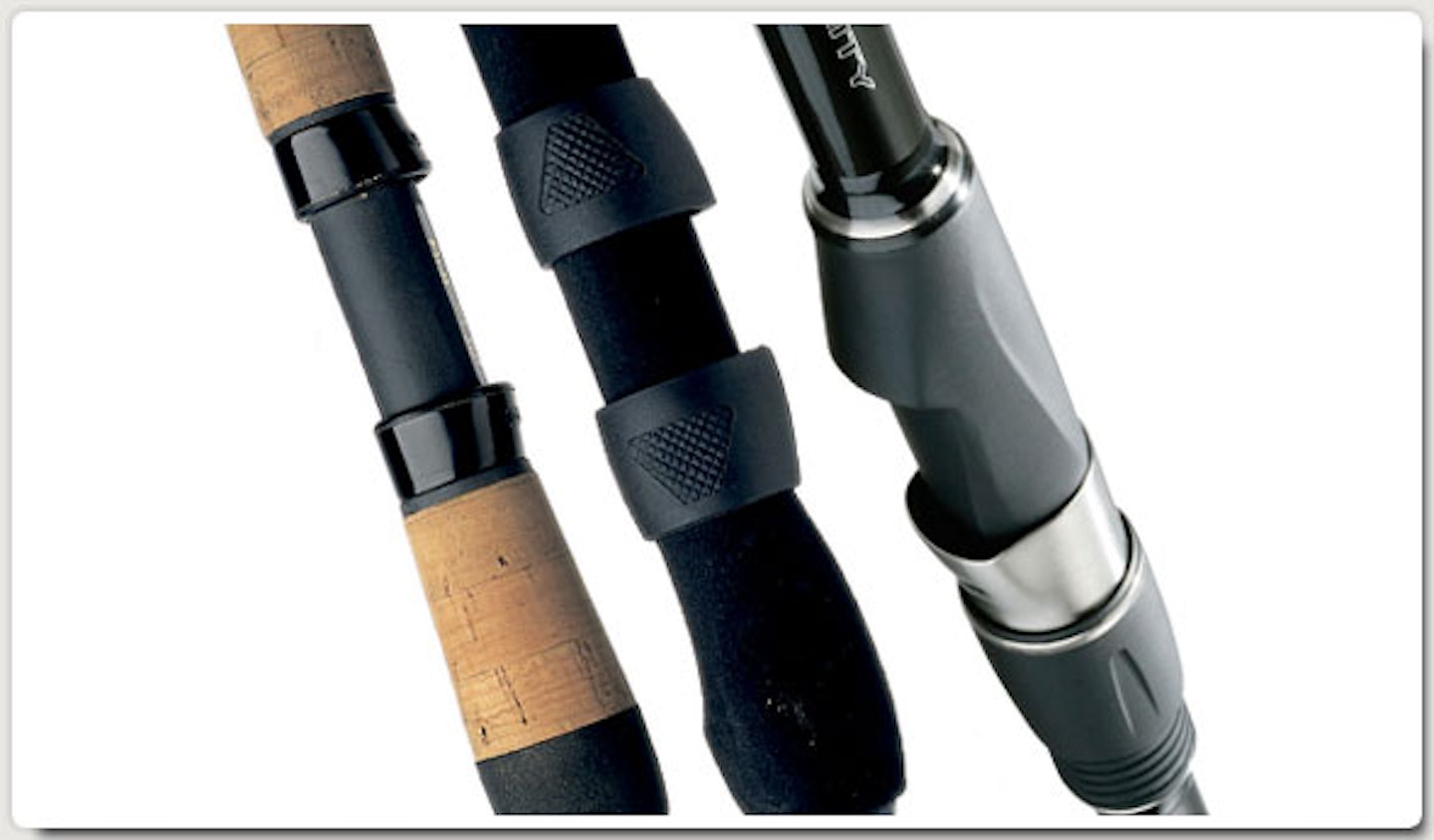
HANDLE LENGTH AND CASTING
Rods designed for chucking rigs a long way tend to have longer handles. Take beachcasters as an example – their handles are extremely long allowing the angler to spread the hands apart for maximum leverage and maximum punching power.
Carp, catfish, pike and powerful quivertip rods all tend to have long handles to give you the extra leverage and be able to launch deadbaits, PVA bags, heavy leads and Method feeders great distances.
Waggler and stick float rods tend to have shorter handles for two reasons. Firstly there’s no need to cast 100s of yards as you won’t be able to find a float that casts that distance, and if you made one yourself you wouldn’t be able to see it! Also, waggler rods are often held, so the shorter the handle, the less weight and the more comfortable the rod will be while it’s being held.

Lure rods have the shortest handles (apart from fly rods). Again these are held for long durations, so weight needs to be cut down, and they are used for short casts of around 40 yards maximum. Finally these rods need to be manoeuvrable across the front of the body when working the lure, playing or landing fish, so short handles perform much better. Short handles are also handy when boat fishing too, as they won’t get in the way in often cramped circumstances.
TEST CURVES OF SPECIMEN RODS
A test curve indicates the rod’s power. It is the weight that the rod can take before it is pulled through a 90 degree angle.
This gives the potential buyer and indication of the rod’s strength and casting ability, which is all-important when you may be casting weighty PVA bags full of bait, extremely heavy leads or when you need to cast great distances.
Most carp rods have test curves of between 2.25lb and 3.5lb. Most specialist Avon rods have test curves of between 1.25lb and 2lb. And predator rods to catch pike and catfish will have test curves of between 2.75lb and 5lb – they are the most powerful.
But when you find out the rod’s test curve, you’ll also need to know the rod’s action as a 2.5lb test curve tip action will offer more casting and playing power than a 2.5lb test curve through action rod simply because there will still be plenty of power left in reserve in the middle and butt sections of the rod which will come into play after the tip of the rod has bent fully.

EXTRA SECTIONS
A great deal of rods available nowadays have additional sections that can be used to increase the rod’s length. These multi-length rods are a real bonus for a few reasons…
Firstly they provide extra casting power and therefore greater distance due to the increased leverage that extra section provides.
You’ll be able to control larger fish at the net better with a slightly longer rod. The extra reach will certainly help pull fish away from marginal snags and weed – paramount when fishing for tench, chub, barbel and carp.
You’ll be able to remove the extra section and fish with a shorter rod when you are faced with a tight, overgrown swim.
You could buy one rod for a multitude of purposes, for example a variable length waggler rod having a fast tip action would be great when used at its normal length for stillwater and commercial fishery work, but add the extra section and you’ll have a brilliant stick float rod that has enough reach to provide excellent float and line control.
There are many multi-length feeder rods on the market too, enabling you to use the rod short for tight swims, for short-to-medium range work or for winter use when you won’t need so much power, but add the extra section and you’ll be able to cast far further, control much more lively fish and increase your chances of bagging a proper haul!

WHICH QUIVERTIP WILL I NEED?
Many newcomers to legering and feeder fishing seem to think that they need to use really powerful quivertips to catch big fish. That’s nonsense. It’s the middle and butt sections of the rod itself that will control the fight not the quivertip.
A quivertip serves one purpose and one purpose only – to provide bite indication. It has absolutely no bearing on the strength of the rod – you could use a 1oz tip for light bomb fishing through to heavyweight Method feeder work if the conditions are right.
Rods with a selection of push-in quivertips are by far the most versatile as you can pick and choose the perfect quivertip to suit the conditions that you are fishing.
Take stillwater feeder fishing as an example. On flat calm windless days you’ll be able to use half ounce quivertips that will bend even if a fish looks at your bait. But on windswept days when the waves are lashing the margins and the water is suffering with a strong undertow you will need to step up in quivertip strength to something like a 2oz tip to ensure it remains still in the dire conditions. You’ll still be able to spot bites using a tip as strong as that, so there’s no need to worry.
Here’s a brief guide to quivertip strengths and their uses…
